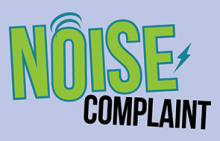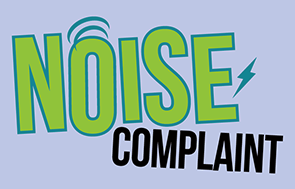User login
Everyday, throughout the day, hospitalists and other healthcare workers are inundated with alerts and warnings and notifications from medical and communication devices. The sheer number of alarms can be extremely overwhelming.
“In any given unit, there may be hundreds of alarms per patient, per day,” says Ronald Wyatt, MD, MHA, medical director of the division of healthcare improvement at The Joint Commission in Oakbrook Terrace, Ill. “That amounts to tens of thousands of alarms each day.”
And, although the intent of these alarms may be good, studies show that 80% to 99% of alarms generated by such medical devices as ventilators, blood pressure monitors, and electrocardiograms are false and/or don’t actually require any clinical intervention.1-4 What’s even more alarming is that clinicians become desensitized—even immune—to the sounds, experiencing what has been called “alarm fatigue.” In response to the constant barrage of noise, clinicians may turn alarms down or off, or adjust alarm settings outside limits that are safe and appropriate for the patient.5
The extent to which alarm fatigue has affected patients is unknown. From 2009 to 2012, The Joint Commission reported 98 alarm-related events. Of these, 80 resulted in death, 13 in permanent loss of function, and five in unexpected additional care or extended stay. Because sentinel event reporting to The Joint Commission is voluntary, Dr. Wyatt estimates that the organization is notified of less than 10% of such events.
Maria Cvach, DNP, RN, MSN, CCRN, DNP, assistant director of nursing for clinical standards at The Johns Hopkins Hospital in Baltimore, Md., says that from 2005 to 2008, there were 566 alarm-related deaths reported to the U.S. Food and Drug Administration’s Manufacturer and User Facility Device Experience (MAUDE) database. “Most experts agree that this is grossly underreported,” says Cvach, who has led alarm system improvement efforts at Hopkins since 2006.
In addition to being a patient safety issue, alarm fatigue has other consequences, Cvach says. Patients and families lose trust in staff when alarms go unanswered. Excessive noise can result in patient and staff harm. Research demonstrates that noise can negatively affect patients’ cardiovascular and immune systems and can increase length of hospital stays. Staff may develop stress symptoms and headaches. In addition, hospitals could face litigation from missed alarms and patient events.
From Bad to Worse
Experts agree that alarm fatigue is getting worse system-wide. ECRI Institute, a nonprofit organization that uses applied scientific research in healthcare to establish best practices for improving patient care, has listed alarm hazards as the number one health technology device hazard for the past three years. This persistent danger has made the top 10 since the list’s inception.6
Cvach says alarm fatigue is fairly easy to recognize.
“If you’re on a unit and hear alarms but do not see anyone addressing them, you are probably witnessing alarm fatigue,” she says. “If you ask staff what is alarming and they indicate that they didn’t notice an alarm ringing, it is likely alarm fatigue. Staff have indicated that sometimes alarms are like ‘white noise.’ [Alarms] go unnoticed because they are considered part of the environment and [staff] are accustomed to them.”
Jairy C. Hunter III, MD, MBA, SFHM, hospitalist and associate CMO for care transitions at Medical University of South Carolina (MUSC) in Charleston, believes alarm fatigue is a problem at every hospital, including his own. In addition to being bombarded with medical device alarms, he is constantly receiving notifications via cell phone, pager, and computers.
“Personally, I feel that I suffer from it [alarm fatigue],” says Dr. Hunter, a member of Team Hospitalist. “When I’m not at work and check my phones, I may realize that I missed answering a few notifications.”
He says that sometimes too much information “may be a bad thing, because we aren’t able to discern what is important and what isn’t. Studies have shown that, in general, people are not good at multi-tasking.”7

Reduction Efforts
Dr. Wyatt believes the corrective actions organizations have implemented to reduce alarm fatigue are not optimal, because the problem is worsening. In addition, the number of patients who are connected to alarm-based devices will continue to increase.
He maintains that hospitalists are uniquely positioned to “team up” with housestaff and tackle this issue.
“Unlike other physicians, [hospitalists] are in the hospital around the clock,” he says.
Dr. Wyatt suggests a good starting point is determining the baseline number of device alarms per day. Then answer these questions:
- How many required clinical intervention?
- How many resulted in harm or death?
- What are the organization’s current monitor alarm default parameters?
- How can we adjust alarms to indicate actionable alarms?
Another tip: Work with engineers and equipment manufacturers to customize alarms and notifications, so staff can readily recognize those that need immediate attention.
Cvach says that unnecessary patient monitoring results in excessive nuisance alarms. Patients should only be monitored when clinically necessary. To determine necessity, refer to the American Heart Association’s Practice Standards for Electrocardiographic Monitoring in Hospital Settings.8
“Alarms should be individualized for patients to make them most useful,” she explains. “Defaults should be customized based on the patient population.”
Cvach also recommends momentarily pausing alarms when assisting patients with turning, suctioning, bathing, and so forth, and changing electrodes regularly.
From a personal perspective, Dr. Hunter suggests that hospitalists turn off as many nonessential notifications as possible and have separate devices for work and personal usage. Reset the tolerance for only certain important types of messages.
“I indicate specific parameters for a nurse or another provider to call me in certain circumstances,” Dr. Hunter says. “That grabs my attention more than a text or e-mail.”
Telling Patients
Vladimir N. Cadet, MPH, an associate with ECRI Institute’s Applied Solutions Group in Plymouth Meeting, Pa., says hospitalists should communicate to patients and their family members, many of whom also suffer from alarm fatigue, the importance of allowing health practitioners to address alarms to minimize the potential for delayed responses or missed alarms.
Patients should be told to notify staff if a medical device alarm goes unanswered, Cvach adds. To facilitate adequate sleep, patients can request earplugs or put on restful music.
Karen Appold is freelance writer in Pennsylvania.
References
- Lawless ST. Crying wolf: false alarms in a pediatric intensive care unit. Crit Care Med. 1994;22(6):981-985.
- Tsien CL, Fackler JC. Poor prognosis of existing monitors in the intensive care unit. Crit Care Med. 1997;25(4):614-619.
- Chambrin MC, Ravaux P, Calvelo-Aros D, Jaborska A, Chopin C, Boniface B. Multicentric study of monitoring alarms in the adult intensive care unit (ICU): a descriptive analysis. Intensive Care Med. 1999;25(12):1360-1366.
- Atzema C, Schull MJ, Borgundvaag B, Slaughter GRD, Lee CK. Alarmed: adverse events in low-risk patients with chest pain receiving electrocardiographic monitoring in the emergency department: a pilot study. Am J Emerg Med. 2006;24(1):62-67.
- Keller JP, Diefes R, Graham K, Meyers M, Pelczarski K. Association for the Advancement of Medical Instrumentation. Why clinical alarms are a “top ten” hazard: how you can help reduce the risk. Horizons. Spring 2011. Available at: http://www.aami.org/htsi/alarms/pdfs/Alarms%20Horizons_Secure_Watermarked.pdf. Accessed March 8, 2015.
- ECRI Institute. Top 10 health technology hazards for 2015. Available at: https://www.ecri.org/press/Pages/ECRI-Institute-Announces-Top-10-Health-Technology-Hazards-for-2015.aspx. Accessed March 8, 2015
- Weigl M1, Müller A, Sevdalis N, Angerer P. Relationships of multitasking, physicians’ strain, and performance: an observational study in ward physicians. J Patient Saf. 2013 Mar;9(1):18-23. doi: 10.1097/PTS.0b013e31826b7b87.
- Drew B, Califf RM, Funk M, et al. Practice standards for electrocardiographic monitoring in hospital settings. Circulation. 2004;110:2721-2746.
Everyday, throughout the day, hospitalists and other healthcare workers are inundated with alerts and warnings and notifications from medical and communication devices. The sheer number of alarms can be extremely overwhelming.
“In any given unit, there may be hundreds of alarms per patient, per day,” says Ronald Wyatt, MD, MHA, medical director of the division of healthcare improvement at The Joint Commission in Oakbrook Terrace, Ill. “That amounts to tens of thousands of alarms each day.”
And, although the intent of these alarms may be good, studies show that 80% to 99% of alarms generated by such medical devices as ventilators, blood pressure monitors, and electrocardiograms are false and/or don’t actually require any clinical intervention.1-4 What’s even more alarming is that clinicians become desensitized—even immune—to the sounds, experiencing what has been called “alarm fatigue.” In response to the constant barrage of noise, clinicians may turn alarms down or off, or adjust alarm settings outside limits that are safe and appropriate for the patient.5
The extent to which alarm fatigue has affected patients is unknown. From 2009 to 2012, The Joint Commission reported 98 alarm-related events. Of these, 80 resulted in death, 13 in permanent loss of function, and five in unexpected additional care or extended stay. Because sentinel event reporting to The Joint Commission is voluntary, Dr. Wyatt estimates that the organization is notified of less than 10% of such events.
Maria Cvach, DNP, RN, MSN, CCRN, DNP, assistant director of nursing for clinical standards at The Johns Hopkins Hospital in Baltimore, Md., says that from 2005 to 2008, there were 566 alarm-related deaths reported to the U.S. Food and Drug Administration’s Manufacturer and User Facility Device Experience (MAUDE) database. “Most experts agree that this is grossly underreported,” says Cvach, who has led alarm system improvement efforts at Hopkins since 2006.
In addition to being a patient safety issue, alarm fatigue has other consequences, Cvach says. Patients and families lose trust in staff when alarms go unanswered. Excessive noise can result in patient and staff harm. Research demonstrates that noise can negatively affect patients’ cardiovascular and immune systems and can increase length of hospital stays. Staff may develop stress symptoms and headaches. In addition, hospitals could face litigation from missed alarms and patient events.
From Bad to Worse
Experts agree that alarm fatigue is getting worse system-wide. ECRI Institute, a nonprofit organization that uses applied scientific research in healthcare to establish best practices for improving patient care, has listed alarm hazards as the number one health technology device hazard for the past three years. This persistent danger has made the top 10 since the list’s inception.6
Cvach says alarm fatigue is fairly easy to recognize.
“If you’re on a unit and hear alarms but do not see anyone addressing them, you are probably witnessing alarm fatigue,” she says. “If you ask staff what is alarming and they indicate that they didn’t notice an alarm ringing, it is likely alarm fatigue. Staff have indicated that sometimes alarms are like ‘white noise.’ [Alarms] go unnoticed because they are considered part of the environment and [staff] are accustomed to them.”
Jairy C. Hunter III, MD, MBA, SFHM, hospitalist and associate CMO for care transitions at Medical University of South Carolina (MUSC) in Charleston, believes alarm fatigue is a problem at every hospital, including his own. In addition to being bombarded with medical device alarms, he is constantly receiving notifications via cell phone, pager, and computers.
“Personally, I feel that I suffer from it [alarm fatigue],” says Dr. Hunter, a member of Team Hospitalist. “When I’m not at work and check my phones, I may realize that I missed answering a few notifications.”
He says that sometimes too much information “may be a bad thing, because we aren’t able to discern what is important and what isn’t. Studies have shown that, in general, people are not good at multi-tasking.”7

Reduction Efforts
Dr. Wyatt believes the corrective actions organizations have implemented to reduce alarm fatigue are not optimal, because the problem is worsening. In addition, the number of patients who are connected to alarm-based devices will continue to increase.
He maintains that hospitalists are uniquely positioned to “team up” with housestaff and tackle this issue.
“Unlike other physicians, [hospitalists] are in the hospital around the clock,” he says.
Dr. Wyatt suggests a good starting point is determining the baseline number of device alarms per day. Then answer these questions:
- How many required clinical intervention?
- How many resulted in harm or death?
- What are the organization’s current monitor alarm default parameters?
- How can we adjust alarms to indicate actionable alarms?
Another tip: Work with engineers and equipment manufacturers to customize alarms and notifications, so staff can readily recognize those that need immediate attention.
Cvach says that unnecessary patient monitoring results in excessive nuisance alarms. Patients should only be monitored when clinically necessary. To determine necessity, refer to the American Heart Association’s Practice Standards for Electrocardiographic Monitoring in Hospital Settings.8
“Alarms should be individualized for patients to make them most useful,” she explains. “Defaults should be customized based on the patient population.”
Cvach also recommends momentarily pausing alarms when assisting patients with turning, suctioning, bathing, and so forth, and changing electrodes regularly.
From a personal perspective, Dr. Hunter suggests that hospitalists turn off as many nonessential notifications as possible and have separate devices for work and personal usage. Reset the tolerance for only certain important types of messages.
“I indicate specific parameters for a nurse or another provider to call me in certain circumstances,” Dr. Hunter says. “That grabs my attention more than a text or e-mail.”
Telling Patients
Vladimir N. Cadet, MPH, an associate with ECRI Institute’s Applied Solutions Group in Plymouth Meeting, Pa., says hospitalists should communicate to patients and their family members, many of whom also suffer from alarm fatigue, the importance of allowing health practitioners to address alarms to minimize the potential for delayed responses or missed alarms.
Patients should be told to notify staff if a medical device alarm goes unanswered, Cvach adds. To facilitate adequate sleep, patients can request earplugs or put on restful music.
Karen Appold is freelance writer in Pennsylvania.
References
- Lawless ST. Crying wolf: false alarms in a pediatric intensive care unit. Crit Care Med. 1994;22(6):981-985.
- Tsien CL, Fackler JC. Poor prognosis of existing monitors in the intensive care unit. Crit Care Med. 1997;25(4):614-619.
- Chambrin MC, Ravaux P, Calvelo-Aros D, Jaborska A, Chopin C, Boniface B. Multicentric study of monitoring alarms in the adult intensive care unit (ICU): a descriptive analysis. Intensive Care Med. 1999;25(12):1360-1366.
- Atzema C, Schull MJ, Borgundvaag B, Slaughter GRD, Lee CK. Alarmed: adverse events in low-risk patients with chest pain receiving electrocardiographic monitoring in the emergency department: a pilot study. Am J Emerg Med. 2006;24(1):62-67.
- Keller JP, Diefes R, Graham K, Meyers M, Pelczarski K. Association for the Advancement of Medical Instrumentation. Why clinical alarms are a “top ten” hazard: how you can help reduce the risk. Horizons. Spring 2011. Available at: http://www.aami.org/htsi/alarms/pdfs/Alarms%20Horizons_Secure_Watermarked.pdf. Accessed March 8, 2015.
- ECRI Institute. Top 10 health technology hazards for 2015. Available at: https://www.ecri.org/press/Pages/ECRI-Institute-Announces-Top-10-Health-Technology-Hazards-for-2015.aspx. Accessed March 8, 2015
- Weigl M1, Müller A, Sevdalis N, Angerer P. Relationships of multitasking, physicians’ strain, and performance: an observational study in ward physicians. J Patient Saf. 2013 Mar;9(1):18-23. doi: 10.1097/PTS.0b013e31826b7b87.
- Drew B, Califf RM, Funk M, et al. Practice standards for electrocardiographic monitoring in hospital settings. Circulation. 2004;110:2721-2746.
Everyday, throughout the day, hospitalists and other healthcare workers are inundated with alerts and warnings and notifications from medical and communication devices. The sheer number of alarms can be extremely overwhelming.
“In any given unit, there may be hundreds of alarms per patient, per day,” says Ronald Wyatt, MD, MHA, medical director of the division of healthcare improvement at The Joint Commission in Oakbrook Terrace, Ill. “That amounts to tens of thousands of alarms each day.”
And, although the intent of these alarms may be good, studies show that 80% to 99% of alarms generated by such medical devices as ventilators, blood pressure monitors, and electrocardiograms are false and/or don’t actually require any clinical intervention.1-4 What’s even more alarming is that clinicians become desensitized—even immune—to the sounds, experiencing what has been called “alarm fatigue.” In response to the constant barrage of noise, clinicians may turn alarms down or off, or adjust alarm settings outside limits that are safe and appropriate for the patient.5
The extent to which alarm fatigue has affected patients is unknown. From 2009 to 2012, The Joint Commission reported 98 alarm-related events. Of these, 80 resulted in death, 13 in permanent loss of function, and five in unexpected additional care or extended stay. Because sentinel event reporting to The Joint Commission is voluntary, Dr. Wyatt estimates that the organization is notified of less than 10% of such events.
Maria Cvach, DNP, RN, MSN, CCRN, DNP, assistant director of nursing for clinical standards at The Johns Hopkins Hospital in Baltimore, Md., says that from 2005 to 2008, there were 566 alarm-related deaths reported to the U.S. Food and Drug Administration’s Manufacturer and User Facility Device Experience (MAUDE) database. “Most experts agree that this is grossly underreported,” says Cvach, who has led alarm system improvement efforts at Hopkins since 2006.
In addition to being a patient safety issue, alarm fatigue has other consequences, Cvach says. Patients and families lose trust in staff when alarms go unanswered. Excessive noise can result in patient and staff harm. Research demonstrates that noise can negatively affect patients’ cardiovascular and immune systems and can increase length of hospital stays. Staff may develop stress symptoms and headaches. In addition, hospitals could face litigation from missed alarms and patient events.
From Bad to Worse
Experts agree that alarm fatigue is getting worse system-wide. ECRI Institute, a nonprofit organization that uses applied scientific research in healthcare to establish best practices for improving patient care, has listed alarm hazards as the number one health technology device hazard for the past three years. This persistent danger has made the top 10 since the list’s inception.6
Cvach says alarm fatigue is fairly easy to recognize.
“If you’re on a unit and hear alarms but do not see anyone addressing them, you are probably witnessing alarm fatigue,” she says. “If you ask staff what is alarming and they indicate that they didn’t notice an alarm ringing, it is likely alarm fatigue. Staff have indicated that sometimes alarms are like ‘white noise.’ [Alarms] go unnoticed because they are considered part of the environment and [staff] are accustomed to them.”
Jairy C. Hunter III, MD, MBA, SFHM, hospitalist and associate CMO for care transitions at Medical University of South Carolina (MUSC) in Charleston, believes alarm fatigue is a problem at every hospital, including his own. In addition to being bombarded with medical device alarms, he is constantly receiving notifications via cell phone, pager, and computers.
“Personally, I feel that I suffer from it [alarm fatigue],” says Dr. Hunter, a member of Team Hospitalist. “When I’m not at work and check my phones, I may realize that I missed answering a few notifications.”
He says that sometimes too much information “may be a bad thing, because we aren’t able to discern what is important and what isn’t. Studies have shown that, in general, people are not good at multi-tasking.”7

Reduction Efforts
Dr. Wyatt believes the corrective actions organizations have implemented to reduce alarm fatigue are not optimal, because the problem is worsening. In addition, the number of patients who are connected to alarm-based devices will continue to increase.
He maintains that hospitalists are uniquely positioned to “team up” with housestaff and tackle this issue.
“Unlike other physicians, [hospitalists] are in the hospital around the clock,” he says.
Dr. Wyatt suggests a good starting point is determining the baseline number of device alarms per day. Then answer these questions:
- How many required clinical intervention?
- How many resulted in harm or death?
- What are the organization’s current monitor alarm default parameters?
- How can we adjust alarms to indicate actionable alarms?
Another tip: Work with engineers and equipment manufacturers to customize alarms and notifications, so staff can readily recognize those that need immediate attention.
Cvach says that unnecessary patient monitoring results in excessive nuisance alarms. Patients should only be monitored when clinically necessary. To determine necessity, refer to the American Heart Association’s Practice Standards for Electrocardiographic Monitoring in Hospital Settings.8
“Alarms should be individualized for patients to make them most useful,” she explains. “Defaults should be customized based on the patient population.”
Cvach also recommends momentarily pausing alarms when assisting patients with turning, suctioning, bathing, and so forth, and changing electrodes regularly.
From a personal perspective, Dr. Hunter suggests that hospitalists turn off as many nonessential notifications as possible and have separate devices for work and personal usage. Reset the tolerance for only certain important types of messages.
“I indicate specific parameters for a nurse or another provider to call me in certain circumstances,” Dr. Hunter says. “That grabs my attention more than a text or e-mail.”
Telling Patients
Vladimir N. Cadet, MPH, an associate with ECRI Institute’s Applied Solutions Group in Plymouth Meeting, Pa., says hospitalists should communicate to patients and their family members, many of whom also suffer from alarm fatigue, the importance of allowing health practitioners to address alarms to minimize the potential for delayed responses or missed alarms.
Patients should be told to notify staff if a medical device alarm goes unanswered, Cvach adds. To facilitate adequate sleep, patients can request earplugs or put on restful music.
Karen Appold is freelance writer in Pennsylvania.
References
- Lawless ST. Crying wolf: false alarms in a pediatric intensive care unit. Crit Care Med. 1994;22(6):981-985.
- Tsien CL, Fackler JC. Poor prognosis of existing monitors in the intensive care unit. Crit Care Med. 1997;25(4):614-619.
- Chambrin MC, Ravaux P, Calvelo-Aros D, Jaborska A, Chopin C, Boniface B. Multicentric study of monitoring alarms in the adult intensive care unit (ICU): a descriptive analysis. Intensive Care Med. 1999;25(12):1360-1366.
- Atzema C, Schull MJ, Borgundvaag B, Slaughter GRD, Lee CK. Alarmed: adverse events in low-risk patients with chest pain receiving electrocardiographic monitoring in the emergency department: a pilot study. Am J Emerg Med. 2006;24(1):62-67.
- Keller JP, Diefes R, Graham K, Meyers M, Pelczarski K. Association for the Advancement of Medical Instrumentation. Why clinical alarms are a “top ten” hazard: how you can help reduce the risk. Horizons. Spring 2011. Available at: http://www.aami.org/htsi/alarms/pdfs/Alarms%20Horizons_Secure_Watermarked.pdf. Accessed March 8, 2015.
- ECRI Institute. Top 10 health technology hazards for 2015. Available at: https://www.ecri.org/press/Pages/ECRI-Institute-Announces-Top-10-Health-Technology-Hazards-for-2015.aspx. Accessed March 8, 2015
- Weigl M1, Müller A, Sevdalis N, Angerer P. Relationships of multitasking, physicians’ strain, and performance: an observational study in ward physicians. J Patient Saf. 2013 Mar;9(1):18-23. doi: 10.1097/PTS.0b013e31826b7b87.
- Drew B, Califf RM, Funk M, et al. Practice standards for electrocardiographic monitoring in hospital settings. Circulation. 2004;110:2721-2746.



